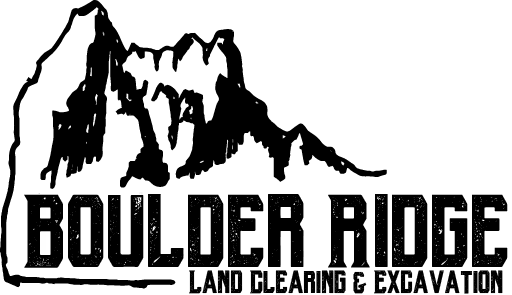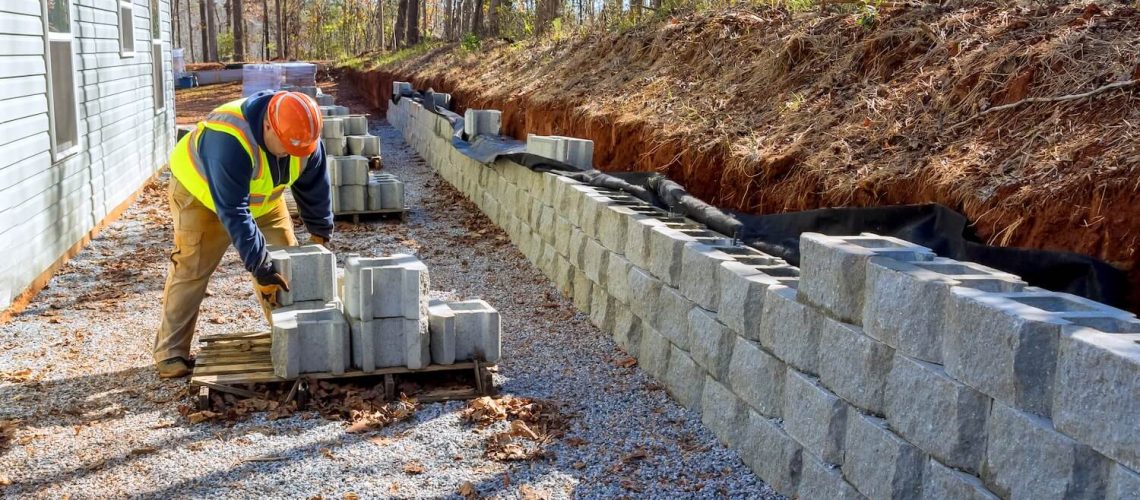Sloped landscapes present both challenges and opportunities for property owners. While a sloped yard or garden can be visually stunning, it also poses significant practical issues. Soil erosion, water runoff, and difficulty in landscaping are common problems. However, one elegant solution that addresses these issues while enhancing the aesthetic appeal of your property is the construction of retaining walls. This article explores the beauty and functionality of retaining walls, providing insights into their design, benefits, and construction.
Understanding Retaining Walls
What is a Retaining Wall?
A retaining wall is a structure designed to hold back soil or rock from a building, structure, or area. They prevent the natural movement of soil, especially in areas with steep gradients. Retaining walls can be made from various materials, including concrete, stone, brick, wood, and even metal. Their primary function is to provide stability to sloped landscapes, but they also offer several aesthetic and functional benefits.
Types of Retaining Walls
- Gravity Walls: These rely on their weight to hold back the soil. They are typically made from heavy materials like stone or concrete and are suitable for smaller slopes and lower walls.
- Cantilevered Walls: These have a more complex design, using a slab foundation and cantilevered structure to hold back more substantial loads of earth. They are often made from reinforced concrete.
- Sheet Pile Walls: Used in softer soils and tight spaces, these walls are constructed by driving steel, vinyl, or wooden planks into the ground.
- Anchored Walls: These walls are reinforced with cables or other materials anchored into the soil behind them, providing additional support and stability for taller walls.
- Segmental Retaining Walls: These modular block walls rely on interlocking units and can be used for various heights and configurations. They are popular for their ease of installation and versatility.
The Functional Benefits of Retaining Walls
Erosion Control
One of the primary reasons for constructing a retaining wall is to control erosion. Sloped landscapes are prone to soil erosion due to water runoff, which can wash away valuable topsoil, damage plants, and destabilize the ground. Retaining walls create a barrier that reduces the speed and volume of water runoff, thereby minimizing erosion and maintaining soil integrity.
Water Management
Retaining walls can significantly improve water drainage on your property. Properly designed walls include drainage systems such as weep holes, perforated pipes, or gravel backfills that help direct water away from structures and prevent waterlogging. This is particularly beneficial in preventing foundation damage and reducing the risk of flooding in lower areas of your property.
Increased Usable Space
By leveling out a sloped area, retaining walls can transform previously unusable land into functional space. This can be particularly advantageous for creating gardens, patios, driveways, or play areas. The increased flat space can enhance your property’s usability and potentially increase its value.
Structural Support
For properties built on or near steep slopes, retaining walls provide essential structural support. They stabilize the soil, preventing landslides and soil creep that could damage buildings, walkways, or other structures. This is especially critical in areas prone to heavy rainfall or seismic activity.
Aesthetic Advantages of Retaining Walls
Enhanced Landscaping
Retaining walls offer numerous opportunities for creative landscaping. They can be used to create terraced gardens, which not only add visual interest but also make it easier to grow plants on different levels. The contrast between the hardscape of the wall and the softscape of plants can create a stunning visual effect.
Architectural Appeal
A well-designed retaining wall can serve as a striking architectural feature. Using materials that complement your home and surroundings, you can create walls that blend seamlessly with your property’s aesthetic or serve as focal points. For example, natural stone walls can provide a rustic charm, while sleek, modern concrete walls can enhance contemporary designs.
Customization and Personalization
Retaining walls are highly customizable. You can choose from various materials, colors, textures, and finishes to match your personal style and the existing elements of your property. Additionally, you can incorporate features like built-in seating, planters, and lighting to add functionality and beauty to your outdoor space.
Increased Property Value
By addressing slope challenges and enhancing the visual appeal of your property, retaining walls can significantly increase its market value. Prospective buyers often appreciate the additional usable space, improved drainage, and attractive landscaping that retaining walls provide.
Design Considerations for Retaining Walls
Material Selection
The choice of materials is crucial in determining the durability, maintenance, and aesthetic appeal of your retaining wall. Some popular options include:
- Concrete: Durable and versatile, concrete can be molded into various shapes and finishes. It is suitable for both modern and traditional designs.
- Natural Stone: Offers a timeless, elegant look and blends well with natural surroundings. However, it can be more expensive and labor-intensive to install.
- Brick: Provides a classic, uniform appearance. Brick walls are durable and can be used in various architectural styles.
- Wood: Creates a warm, natural look, but may require more maintenance and have a shorter lifespan compared to other materials.
- Gabion: Consists of wire cages filled with rocks. Gabion walls are flexible, durable, and have a unique, industrial aesthetic.
Structural Integrity
Ensuring the structural integrity of your retaining wall is paramount. This involves proper engineering and construction techniques to withstand the pressure exerted by the retained soil. Key considerations include:
- Foundation: A strong foundation is essential to prevent settling and shifting. The type of foundation will depend on the wall’s height, soil conditions, and load requirements.
- Drainage: Effective drainage systems prevent water buildup behind the wall, which can cause hydrostatic pressure and lead to wall failure. Incorporate drainage pipes, weep holes, and gravel backfills to manage water flow.
- Reinforcement: Taller walls or walls retaining significant loads may require reinforcement, such as steel rebar, geogrids, or tie-backs, to enhance stability.
Height and Slope
The height and slope of your retaining wall will influence its design and construction. Local building codes often regulate the maximum allowable height for retaining walls without engineering approval. For taller walls, stepped or terraced designs can distribute the load more effectively and provide additional planting areas.
Aesthetics and Integration
When designing your retaining wall, consider how it will integrate with your existing landscape and structures. Use complementary materials and colors, and think about incorporating features like steps, seating, or lighting to enhance functionality and visual appeal. Planting along the top and base of the wall can soften its appearance and create a cohesive look.
Maintenance and Longevity
Regular Inspections
To ensure the longevity of your retaining wall, conduct regular inspections for signs of damage, such as cracks, bulging, or leaning. Early detection of issues allows for timely repairs and prevents more significant problems.
Drainage Maintenance
Maintaining the drainage system is crucial to prevent water buildup and hydrostatic pressure. Clear any blocked weep holes or drainage pipes and ensure the area behind the wall is free from debris.
Vegetation Management
If you have plants along or near your retaining wall, ensure they are properly maintained. Overgrown roots can exert pressure on the wall, and excessive vegetation can hinder drainage.
Hiring a Professional Excavation Company
While DIY projects are tempting, constructing a retaining wall is a complex endeavor that requires expertise in excavation, engineering, and construction. Hiring a professional excavation company ensures that the project is done correctly from start to finish. Here’s why professional help is crucial:
- Expertise and Experience: Professional excavation companies have the knowledge and experience to assess soil conditions, determine the appropriate wall design, and handle the construction process efficiently. They understand local building codes and ensure compliance, minimizing potential issues.
- Equipment and Resources: Excavation for retaining walls often requires heavy machinery and specialized tools. Professional companies have access to these resources, allowing them to excavate, build foundations, and install walls safely and effectively.
- Quality Assurance: Professionals deliver high-quality results that are structurally sound and aesthetically pleasing. They use quality materials and construction techniques that enhance the durability and longevity of your retaining wall.
- Safety Considerations: Building retaining walls involves working with heavy materials and working at heights. Professional excavation companies prioritize safety, following industry standards and protocols to protect workers, property, and bystanders.
- Timely Completion: Hiring professionals ensures that your project stays on schedule. They have the manpower and organizational skills to complete the work efficiently, minimizing disruptions to your daily life.
- Long-Term Investment: A professionally constructed retaining wall adds value to your property and requires less maintenance over time. It’s a long-term investment that enhances the functionality and aesthetics of your landscape.
By choosing a reputable excavation company, you can transform your sloped terrain into a beautiful and functional space with confidence. Their expertise and commitment to quality ensure that your retaining wall not only meets but exceeds your expectations. Whether you’re planning a residential garden or a commercial landscaping project, professional assistance ensures that your retaining wall stands the test of time.
Conclusion
Retaining walls offer a perfect blend of beauty and functionality, transforming challenging slopes into visually stunning and practical landscapes. By addressing erosion, improving water management, increasing usable space, and enhancing the aesthetic appeal of your property, retaining walls are a valuable addition to any sloped terrain. With careful planning, design, and maintenanceand maintenance, retaining walls can provide long-lasting benefits for your property. Whether you’re looking to create terraced gardens, prevent soil erosion, or enhance your outdoor living space, a well-designed retaining wall can meet these needs effectively.

